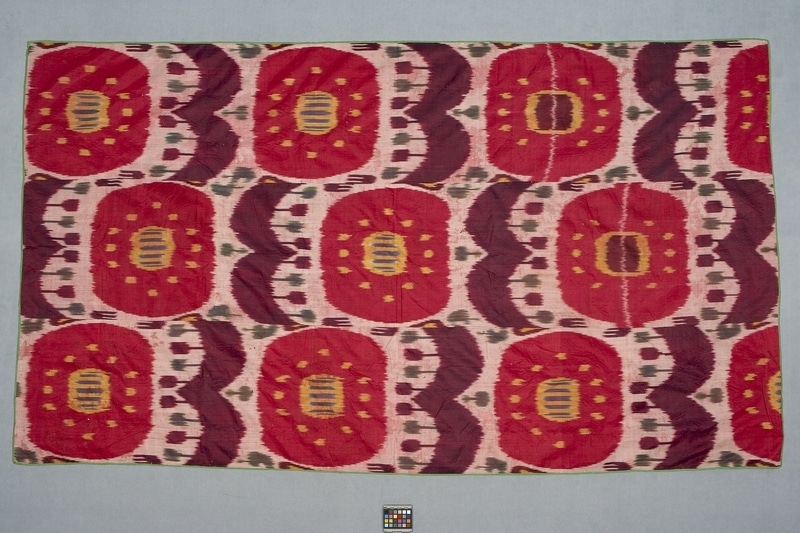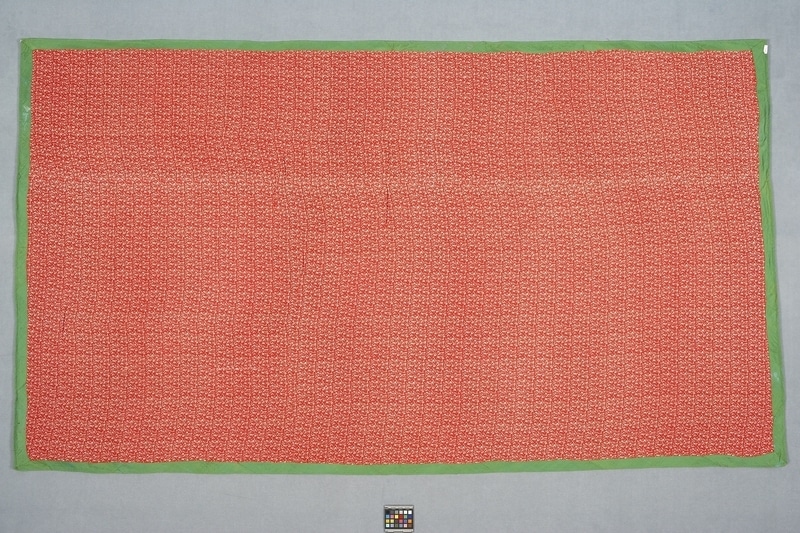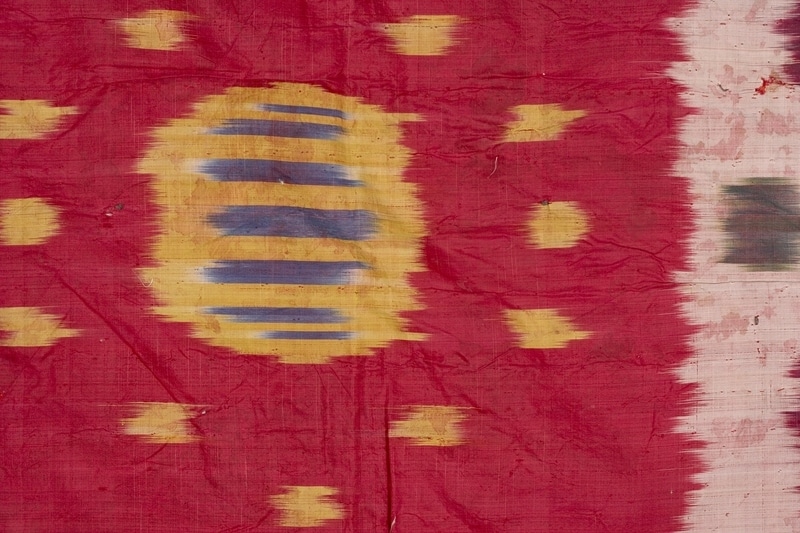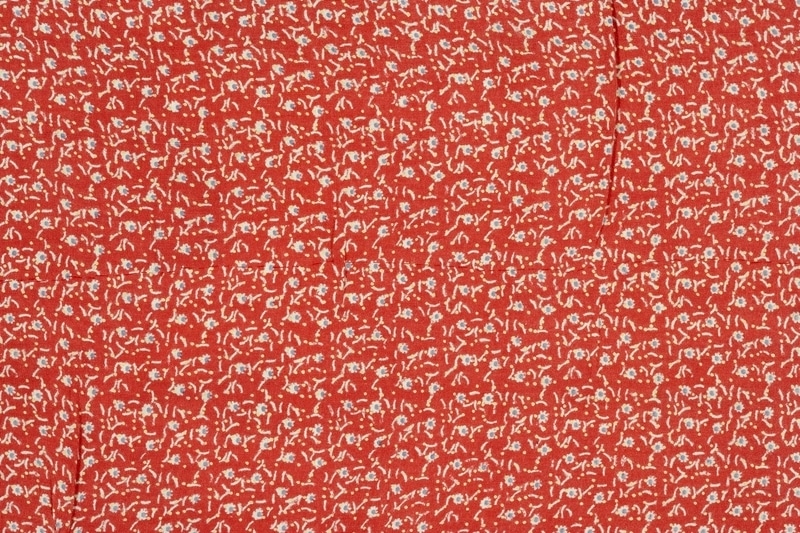Textile Item Number: 1046/3 from the MOA: University of British Columbia




Description
Rectangular, multi-coloured silk ikat bed cover or wall hanging, backed with red, white and gray-blue machine printed cotton textile. The patterns on the ikat side are large and boldly colourful and are composed of six-colour warp-face ikat designs on three narrow vertical panels that have been stitched together to achieve the desired width. The silk weft is bright pink, giving the piece an overall rosy appearance. The cotton backing textile is loosely attached to the ikat silk with running stitches made with red thread. All edges are bound with green silk bias binding.
History Of Use
May have been used as a bed cover (adiol) for a bride and groom, or could also have been used as a decorative wall hanging (pardah), curtain, room divider, etc. The printed cotton textile used to back this piece was undoubtedly produced in Russia, where there was a flourishing industry that produced printed textiles for the Central Asian market. It is difficult to speculate about the cultural and geographic origins of ikat textiles made in the 20th century because protracted episodes of political unrest caused major movements of inhabitants across national borders during the Soviet era. For instance, entire workshops which traditionally produced ikats in Uzbekistan may have moved to Afghanistan in order to avoid collectivization, imposed by the political establishment.
Narrative
According to Clarke Abbott of Tradewind Antiques, the person who collected this piece lived in Kabul in the early 1960s, doing ambassadorial work. He traveled widely throughout the area. He was killed in an automobile accident there, and no further information is available about him or his collection. The piece was subsequently acquired by Tradewind Antiques in Vancouver at an unknown date, and the Museum of Anthropology purchased it in 1984, when the business was liquidating its stock.
Specific Techniques
The patterns used in ikat textiles vary greatly in response to changes in fashion and style. Ikat production is a specialized, urban activity that involves the expertise of many separate groups of artisans who tie, dye and weave the textiles. Specialization for each of these activities is assigned to specific ethnic groups and follows strict tradition. The white line on one of the panels results from the positioning of the framework on which the weft yarns are wound during the dyeing process.
Item History
- Made in Uzbekistan ? or Afghanistan ? between 1920 and 1930
- Owned by Tradewind Antiques before July 12, 1985
- Received from Museum of Anthropology Shop Volunteers (Funding source) and Tradewind Antiques (Seller) on July 12, 1985
What
- Name
- Textile
- Identification Number
- 1046/3
- Type of Item
- textile
- Material
- cotton fibre, silk fibre and dye
- Manufacturing Technique
- warp-face ikat, machine printed and sewn
- Overall
- height 224.0 cm, width 127.0 cm
Who
- Culture
- Uzbek
- Previous Owner
- Tradewind Antiques
- Received from
- Museum of Anthropology Shop Volunteers (Funding source) and Tradewind Antiques (Seller)
Where
- Holding Institution
- MOA: University of British Columbia
- Made in
- Uzbekistan ? or Afghanistan ?
When
- Creation Date
- between 1920 and 1930
- Ownership Date
- before July 12, 1985
- Acquisition Date
- on July 12, 1985
Other
- Item Classes
- textiles
- Condition
- good
- Accession Number
- 1046/0003